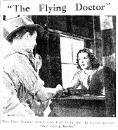 5683620694228612154.jpg
5683620694228612154.jpg
Publicity still, Northern Star, 31 October 1936, p.4
Adaptation of
The Flying Doctor
1934
single work
novel
Issue Details:
First known date:
1936...
1936
The Flying Doctor


